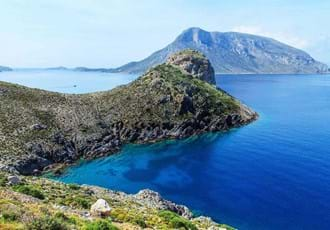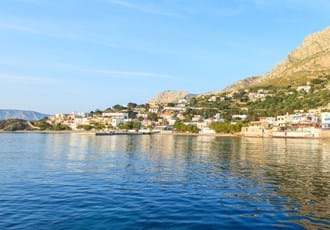It seems impossible to pack so much into such a small space. But Kalymnos does it with great style.
It’s known as the sponge fishing island because harvesting sponges from the sea once made Kalymnos rich. Sub-aqua diving is still a big sport there.
It’s a rock climbers paradise too because rugged cliffs and rocky mountains challenge expert climbers from all over the world. Four mountain ranges dominate the island – and it’s only a dozen miles long and eight wide.
So how come it’s such a gem for tourists who want to relax rather than dangle from a cliff or dive with the fish? Here’s how.
Marvellous scenery that includes valleys green with grapevines and orange groves, thermal springs, caves and even a Scandi-style fjord that cuts through the mountains at peaceful Vathy.
Brilliant beaches such as the sands at lively Masouri, one of several beaches with sunbeds, sunshades, cafes and an exciting range of watersports. There are plenty of more remote, secluded and lovely coves tucked into cliffsides and hills too. Wherever they are, there is the warm, clear, deep-blue and inviting Aegean Sea.
Amazing history - the remains of a sanctuary that was a place of pagan worship for more than a thousand years; a clifftop medieval castle; the ruins of a fortified mountain village abandoned in the 18th century.
Picturesque Pothia, the port and stylish capital, unfolds as the ferry from Kos approaches Kalymnos. A bronze statue of a mermaid welcomes visitors ashore. The white-painted houses, some of them 19th century mansions, sweep up the hillsides behind a big, friendly town full of atmosphere, interesting shops and family-run tavernas.
A museum tracks the rise and fall of the island’s sponge fishing business which made Kalymnos an affluent Greek island in the 19th century. A sponge-killing disease and the arrival of synthetic sponges destroyed the trade. Some fascinating sponge fishing still goes on and scuba diving is a hugely popular activity with expert help available for beginners or experts.
But diver or not, the joy of Kalymnos is it invites everyone to dive deep into its many delights.






















